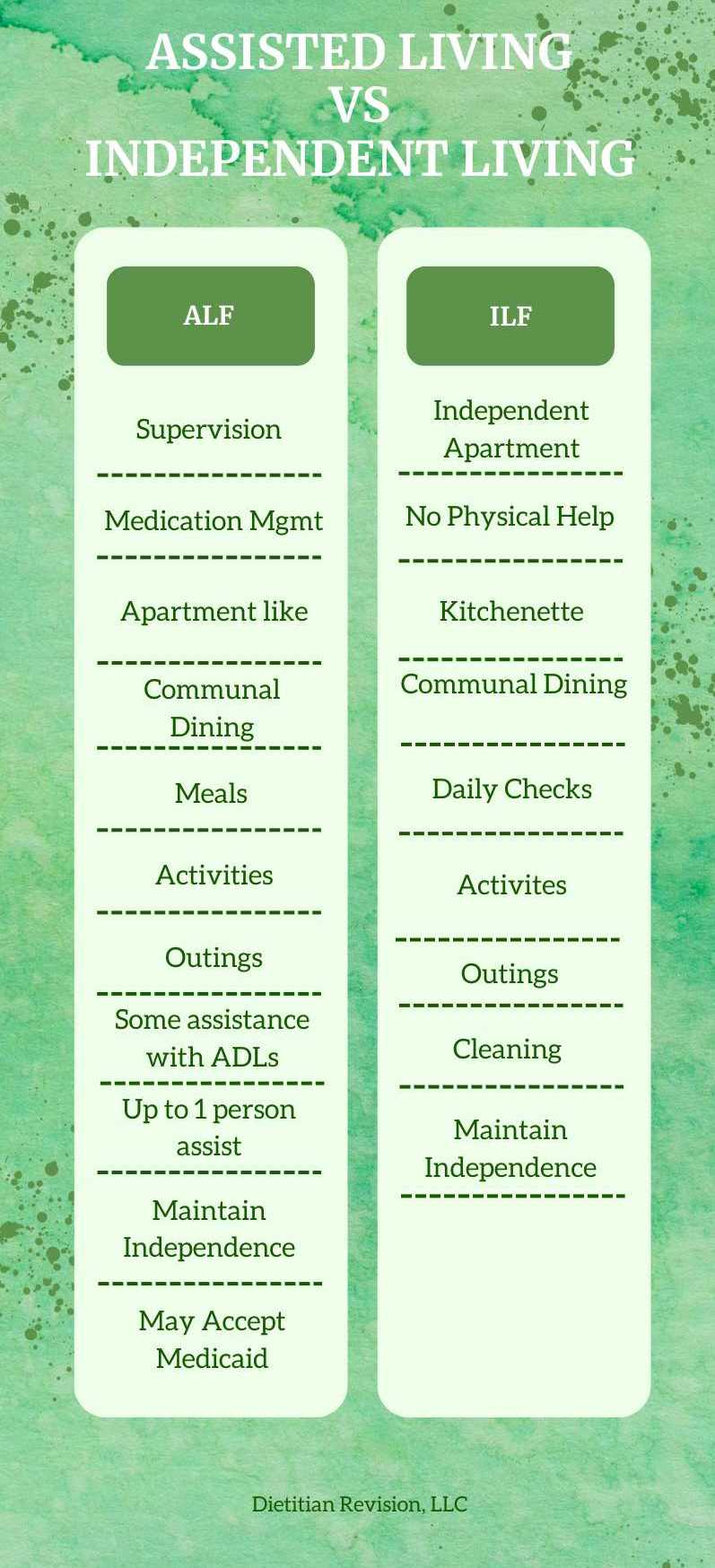Figuring out the best care option can be difficult when your older loved ones can no longer live at home.
Understanding the different types of care facilities is the first step. Let’s explore the difference between independent living and assisted living facilities.
Independent Living
Independent living facilities (ILF) are similar to living in an apartment with some additional benefits.
The living space is private and apartment-like. There is usually a small kitchenette for simple food preparation.
The majority of meals are provided in a community dining room at set times. Activities, outings, and cleaning occur throughout the month.
Staff will likely provide daily checks to ensure basic safety. Emergency call cords may be present in the bathroom. Vehicles are usually allowed and sometimes even pets.
Someone must be able to function mostly on their own to be appropriate to live at an independent living facility.
If the ability to cook, clean, and manage a house is difficult, but physical ability is not an issue, then independent living is a great option.
Assisted Living
Assisted living facilities (ALF) can vary greatly depending on the location. Some are smaller and home-like with only several rooms. Others are large and more facility-like.
Most rooms are shared with a roommate, however some facilities may offer private rooms for an additional charge. They will likely need to be furnished.
Meals are provided in a communal dining room. Therapeutic and altered diets are usually able to be accommodated.
Activities happen throughout the day and may even include outings.
Depending on mental and physical status, residents can sign themselves out for leave as desired. Some may even allow pets and vehicles.
Med techs are on staff to provide medications several times a day. There are limitations to what is able to be provided and frequency of treatments.
This could include things like IV medications, blood sugar checks, insulin, and wound care.
A nurse may be available throughout the week, usually through home healthcare, to provide some of this more advanced care. But not usually every day.
Staff can provide physical assistance, as long as help from only one person is needed. This applies to transferring from bed to chair or toilet.
If the help of two people is needed or the use of a mechanical lift is necessary then a skilled nursing facility is more appropriate. If cognition is an issue then memory care may be a better setting.
Assisted living is a great option if help is only needed from one person or less and there are not any complicated medical needs.
Assisted vs Independent Living
Assisted living offers a higher level of care compared to independent living, as the names indicate. Both provide rooms, meals, and activities.
But assisted living can accommodate higher care needs, including help with activities of daily living and medication management.
Cost can also vary depending on the facility. Some ALF accept Medicaid, which can contribute towards the bill.

Choosing Between Assisted Living and Independent Living
Most older adults want to maintain as much independence as possible as they age. It is also important to look towards the future and plan accordingly.
If physical ability is not an issue, but additional household support is needed, then independent living is a great option.
In progressive diseases, declines are inevitable. In these cases it can be best to admit to a higher level of care to avoid multiple moves and readjustments in the future.
If medical conditions are beginning to progress, requiring more medications, it can be helpful to have trained staff around for help, like at an ALF.
When physical help is needed from one person, then an ALF is a great setting to maintain independence and get necessary assistance to stay safe.
It is best to tour different facilities to see where you’ll best prefer. Affordability is also a big consideration.
Practical Takeaways and Next Steps
Take a realistic look at how your loved one is physically and medically doing. This can be difficult to really see sometimes.
Ask a neutral party for their opinion, because they may be able to see what you’re unable to.
If a hospital or rehab stay is triggering this decision, then ask the care team’s professional opinion.
Then tour those types of facilities in your area. Each state typically has their own facility finder site to search for accredited facilities.
Once you have narrowed it down, take your loved one on tours. Most facilities are paid month to month, so a decision does not have to be permanent.


